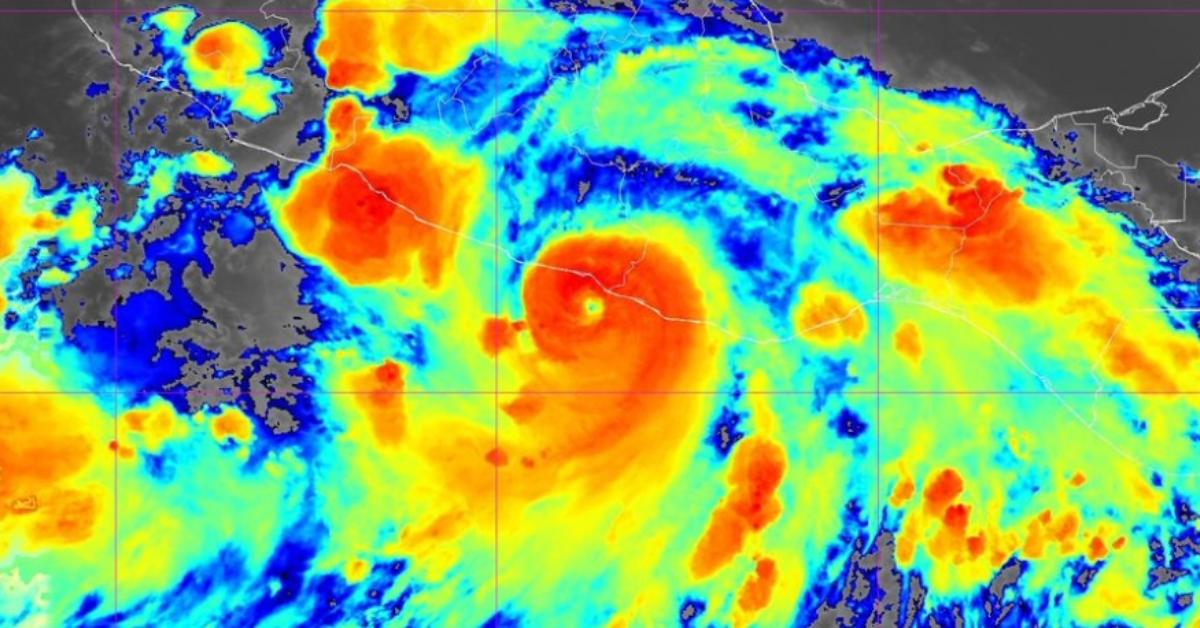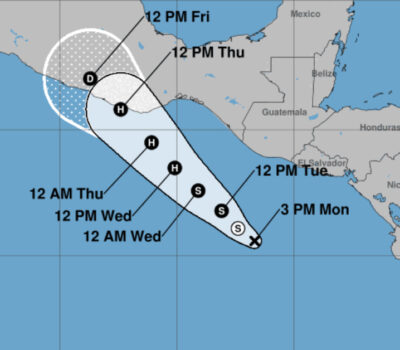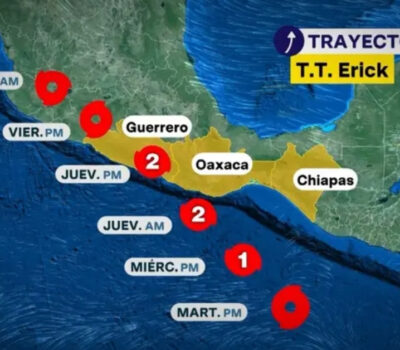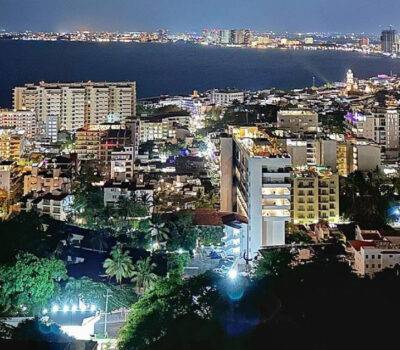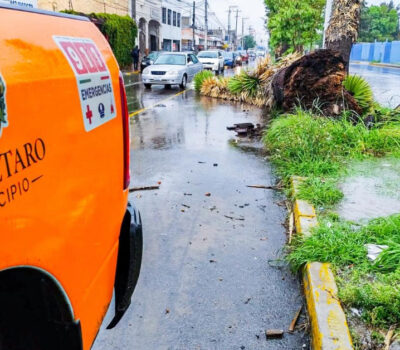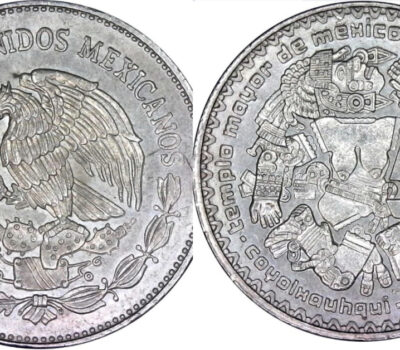Puerto Vallarta, Mexico – Tropical Storm John, previously a Category 3 hurricane, has been downgraded to a tropical storm as it continues moving northwest along Mexico’s southern Pacific coast. The U.S. National Hurricane Center (NHC) issued an advisory on Tuesday confirming that the storm was located approximately 185 kilometers (115 miles) northwest of Punta Maldonado in Guerrero state, with maximum sustained winds of 110 kilometers per hour (68 mph).
Despite the downgrade, the NHC warned that life-threatening conditions persist in the region, with the potential for dangerous winds, storm surge, and torrential rains. John made landfall late Monday near Marquelia, Guerrero, packing winds of 120 mph (193 km/h), causing extensive damage to the coastline and prompting a massive emergency response.
Flash Flooding and Landslides Threaten Coastal Regions
The downgrade from a Category 3 hurricane to a tropical storm has not diminished the severe risks posed by John. “Life-threatening flash flooding will continue along the southern coast of Mexico for the next few days,” the NHC stated in its latest update. Authorities are especially concerned about flash floods and landslides in the states of Guerrero and Oaxaca, where red alerts remain in effect. Rainfall in some areas could exceed 250 millimeters (9.8 inches), overwhelming local infrastructure and causing significant disruption to daily life.
Mexican Government Response
Mexican President Andrés Manuel López Obrador, addressing the nation on Monday, urged residents in vulnerable areas to seek higher ground. “The priority is to save lives,” the president said, emphasizing the importance of following local authorities’ instructions during this critical period. López Obrador’s government has dispatched emergency teams to affected areas, focusing on evacuation, rescue operations, and disaster relief.
In Guerrero and Oaxaca, government officials have closed schools as a precaution, while residents in Puerto Escondido, Oaxaca, scrambled to secure boats and beach equipment ahead of the storm. The city, a popular tourist destination, has seen its normally bustling coastal areas nearly deserted as the local population prepares for the worst.
Continuing Risk for Coastal Communities
The southern coast of Mexico is no stranger to the destructive power of Pacific storms, and Tropical Storm John is a grim reminder of the dangers that such weather systems pose. While the storm has weakened since making landfall, its capacity to cause widespread flooding and infrastructure damage remains significant. Rivers and streams in the region are at risk of overflowing, and the threat of landslides in mountainous areas is expected to continue over the next several days.
Local authorities have been working around the clock to provide assistance to those in need, with emergency shelters set up in coastal and low-lying areas. As John moves northwest, its effects are expected to be felt in additional regions along Mexico’s Pacific coast. Civil protection units are coordinating efforts to assess the damage and offer relief to affected residents.
Weather Outlook
According to meteorologists, Tropical Storm John will likely continue to weaken as it progresses along the coast. However, the storm’s wide band of rainfall and slow-moving nature will result in prolonged heavy rains, exacerbating the risk of flash flooding. The NHC advised residents in affected regions to remain vigilant, avoid low-lying areas, and follow updates from local officials regarding evacuation orders and road closures.
As the storm moves further from the southern states, other regions such as Jalisco and Nayarit are being warned of potential impacts, including strong winds and heavy rains. While not expected to be as severe as those along the southern coast, authorities remain cautious, issuing advisories to ensure preparedness.
Puerto Escondido Residents Brace for Impact
In Puerto Escondido, a city known for its surf and vibrant tourism industry, the local population is taking proactive measures. Businesses have shuttered, and locals have been seen boarding up windows and securing loose objects in anticipation of the storm’s arrival. The city’s beaches, usually bustling with visitors, were eerily quiet as residents prepared for the incoming rains and winds.
Local civil protection teams have been deployed to provide assistance and monitor key areas for potential flooding. Authorities have also advised the population to refrain from any maritime activities and to stay indoors as the storm continues its path.
Conclusion
Though downgraded, Tropical Storm John remains a formidable threat to Mexico’s Pacific coast. The combination of high winds, torrential rains, and the potential for severe flooding and landslides has left the region on edge. Emergency services are in place, but residents are urged to take the necessary precautions and to heed government warnings to avoid unnecessary risks.
The next few days will be critical as John makes its way northwest, and while its intensity may decrease, the storm’s impact will likely be felt for some time in the affected areas. Residents and authorities alike are working diligently to mitigate the damage, but the full scale of John’s destruction will only be revealed in the aftermath.
Local authorities and emergency services continue to provide regular updates, and residents are urged to stay informed and prepared for any potential changes in the storm’s trajectory.
Puerto Vallarta, Mexico - Tropical Storm John, previously a Category 3 hurricane, has been downgraded to a tropical storm as it continues moving northwest along Mexico's southern Pacific coast. The U.S. National Hurricane Center (NHC) issued an advisory on Tuesday confirming that the storm was located approximately 185 kilometers (115 miles) northwest of Punta Maldonado in Guerrero state, with maximum sustained winds of 110 kilometers per hour (68 mph).

